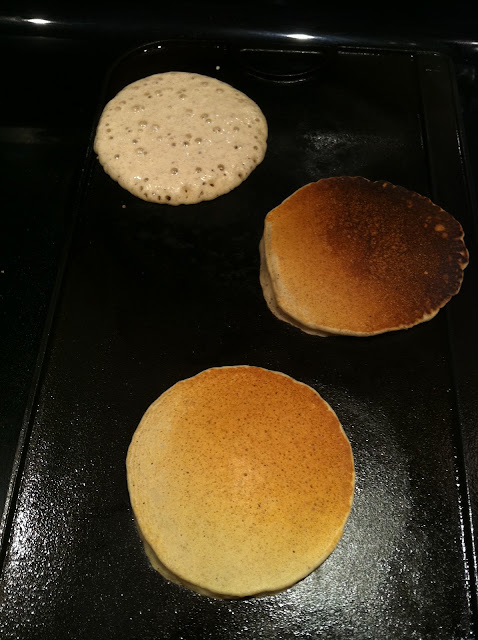ñame is widely used in the Caribbean coast of Colombia and is essential in the preparation of Sancocho ( typical soup) and other dishes. It is know as cará in Brazil, Malanga in Puerto Rico, Dominican Republic and Cuba. In North America is known as Taro and is a main ingredient in the Hawaiian cuisine.
These pancakes are fluffier and lighter and make a great breakfast or dessert.
Ingredients for 6 pancakes
1/2 cup all purpose flour
1/2 cup ñame (Taro) flour
2 tablespoon sugar
1/2 teaspoon salt
1/2teaspoon baking powder
1 egg
1/2 cup milk
Toppings
½ cup blueberries or any berry in season (leave some fresh to garnish)
½ cup whipping cream
4 tablespoon sugar
1 tablespoon of lemon juice
In a large bowl add the flours, salt, baking powder and mix. Stir in the egg, sugar and milk and mix well until the batter is well incorporated.
Oil lightly a griddle and heat to medium heat. Pour ¼ cup of the batter on the hot griddle and flip over when top begins to bubble slightly. Cook until golden brown on both sides.
In a small pot add the berries, 3 tablespoons sugar and the lemon juice and cook for 5 minutes in medium heat to create a coulis.
Whip the cream with a tablespoon of sugar until hard and fluffy.
Top the pancakes with the berries coulis and the whipping cream and garnish some fresh berries or chopped fruits.


Hola Paisa.
ReplyDeleteMire, he estado buscando para sembrar algunas plantas comunes a mi tierra. He encontrado que el Taro es más como el "Ocumo" de Venezuela y el Ñame es traducido "Igname".
Ahora bien, para seguir su receta, sería tan amable en aclarar para mí cual usted usa?
Muchas gracias compa.
Hola, la harina que yo uso la venden bajo en nombre de taro. Esta planta es cultivada en USA solamente en Hawaii y es la misma que en Valle del Cauca conocemos como Name o Mafafa, su nombre es (Colocasia esculenta).El Name de la Costa Caribe Colombiana es diferente, es la que ingles se llama "Yam". Otros nombres que tiene el Taro son: en Brasil, Cara, en Pto Rico, Rep. Dominicana y Cuba, Malanga; en las Islas Canarias, Name.
ReplyDeleteEl ñame es diferente al Taro. El ñame es un tuberculo y entedadera se da en suelos poco fértiles y secos. El taro es una planta carnosa erecta de hojas grandes amante del agua
ReplyDelete